Feast of the Sacred Heart Message
June 19, 2020Greetings on the feast of the Sacred Heart.
Today (19 June) we celebrate the feast of the Sacred Heart. This feast speaks of the love God has for each of one of us and the love we are called to extend to one another. Devotion to the Sacred Heart was integral to the spirituality of both Fr Julian Tenison Woods and Saint Mary MacKillop. Mary MacKillop wrote to the Sisters in 1907 a reflection on the Sacred Heart. In it she reflects upon the special relationship that she has with the Sacred Heart. She writes:
How apt are these words as we come to celebrate the feast of the Sacred Heart in 2020? Danger has threatened our world through the existence of a small virus named COVID-19; people continue to be persecuted for the colour of their skin, their religious beliefs and their voice for justice; and our planet Earth is ravaged by unprecedented natural disasters and the destruction of the environment.
Our Sisters of Saint Joseph Constitutions remind us:
Saint Teresa of Avila reminds us our eyes are the eyes through which Christ looks compassion on our world today that same compassion which Saint Paul in his letter refers:
Compassion that capacity to stand in the shoes of another and see the world from that viewpoint. Recently we have seen this reflected in the program on SBS called ‘Filthy Rich and Homeless’ when five people have been sent to experience the realities of homelessness in our society. We have seen it in the many essential service workers especially the nurses and doctors who have risked their own lives to care for the life of another and at times making the ultimate sacrifice of their own life. We have seen it in a new sense of neighbourliness that has arisen out of the COVID-19 experience. We have seen it in the response of thousands of people across the world raising their voice against racial discrimination. We have seen it in the UNICEF and other volunteer groups working with those in refugee camps to put in place steps towards preventing the spread of the coronavirus. We have seen it in the simple gestures of kindness and words of encouragement and hope that have filled our world with love in these recent months.
Inspired by the compassionate way of Jesus we are called on this feast day to send forth from that sacred place within us, compassion and mercy on our world. Drawn into the very heart of God the source and fountain of all love we hear the Spirit whisper, ‘Go and embody my Love. Go to those places of deepest pain. Be my hands and feet. Be my eyes and ears. Be my tears and joy. Be my voice. Go plant seeds of love’.
Happy feast day.
Sr Monica Cavanagh
Congregational Leader
Sr Monica has provided a message from Pentecost in the video below:
Additionally, you’re invited to view a message for the feast of the Sacred Heart from the Congregational Leadership Team below:
CLT Feast of the Sacred Heart Message (PDF)
Footnotes:
[1] Letter Mary MacKillop to the Sisters 21 May 1907
[2] Letter Mary MacKillop to the Sisters 1873
Love Comes Looking for Us
Feast of the Sacred Heart.
 The heart of Jesus is viewed as a symbol of “God’s boundless and passionate love for humankind” [1] and in light of the writings of Teilhard de Chardin, Thomas Merton, Elia Delio, Beatrice Bruteau and others, is referred to as the Sacred Heart enflamed, the incarnate Word, the Cosmic Christ, the Centre of centres – intimately personal and yet boundlessly cosmic.
The heart of Jesus is viewed as a symbol of “God’s boundless and passionate love for humankind” [1] and in light of the writings of Teilhard de Chardin, Thomas Merton, Elia Delio, Beatrice Bruteau and others, is referred to as the Sacred Heart enflamed, the incarnate Word, the Cosmic Christ, the Centre of centres – intimately personal and yet boundlessly cosmic.
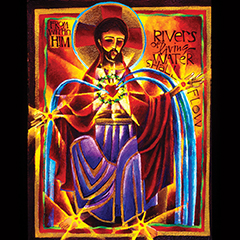 In living the gospel of today through the lens of the Sacred Heart, Richard Rohr reminds us that we are living in a liminal space between two worlds – before and after COVID -19. [2] Consciously aware of the suffering and impact of the current pandemic we take the opportunity to raise our consciousness of love and new tenderness in communion with the Sacred Heart and with each other with a passion for God, for humanity and all the Cosmos.
In living the gospel of today through the lens of the Sacred Heart, Richard Rohr reminds us that we are living in a liminal space between two worlds – before and after COVID -19. [2] Consciously aware of the suffering and impact of the current pandemic we take the opportunity to raise our consciousness of love and new tenderness in communion with the Sacred Heart and with each other with a passion for God, for humanity and all the Cosmos.
The following musings may resonate with us as we contemplate the love of the Sacred Heart in the context of the Heart of Jesus, Heart of the Cosmos and our own heart.
Teilhard de Chardin’s spirituality revolved around his childhood and adult devotedness to the Sacred Heart. His vision of the Sacred Heart as the centre of the universe assists us in enlarging our heart’s consciousness of the reality of who we are and the reality of God-in-matter – a lovingly beating world-heart at one with our heartbeat and the heartbeat of our God. [3]
Elia Delio speaks of our Life in God as a daring adventure of love—a continuous journey of putting aside our securities to enter more profoundly into the uncharted depths of God. [4]
The words of Scripture and St. Mary MacKillop testify to God’s loving presence in our lives:
 Thomas Merton captures the vitality and intensity of God’s love as conveying the extravagance, the sheer exuberance, of love. [5]
Thomas Merton captures the vitality and intensity of God’s love as conveying the extravagance, the sheer exuberance, of love. [5]
In the writings of David Richo, we are invited to contemplate God seeking us:
 Historically the connection between the heart of Jesus and that of the heart of individuals is attributed to French Benedictine, Swami Abhishiktanananda.
Historically the connection between the heart of Jesus and that of the heart of individuals is attributed to French Benedictine, Swami Abhishiktanananda.
As one passes from depth to depth in one’s own heart, the awakened disciple reaches the ultimate depth of the heart of Jesus. [7]
Pope Francis challenges us to touch the wounds of Jesus as Thomas asked: to enter Jesus wounds. [8] We do this with open and responding hearts in communion with the Sacred Heart for all the suffering in today’s world particularly relating to COVID-19 that as people of hope a new world of greater compassion, equality and justice post COVID-19 might be a new reality for all.
Mary Oliver’s words could reflect the love of the Sacred Heart in the mystery of God’s exuberant and inclusive love in our troubled world when she invites us to:

Margaret Cleary rsj
Footnotes:
[1] Wikipedia definition
[2] Center for Action and Contemplation,Richard Rohr- 28 April 2020
[3] Everything Ablaze, David Richo, P. 59
[4] Omega, Elia Delio – dated 27 April, 2020
[5] ‘The Art of Thomas Merton, John Moses, P.46
[6] Everything Ablaze, David Richo, P.57
[7] Radical Optimism, Beatrice Bruteau, P.96
[8] Daily Reflections, Pope Francis, P.129
[9] Daily Love – National Geographic (March 22)
Laudato Si’ Webinar: Part Three
June 18, 2020In May 2015 Pope Francis launched his encyclical with the subtitle “On Care for our Common Home” and the title “Laudato Si’” which are the opening words for a hymn composed by St Francis of Assisi in the 1200s.
For our time, this document is both relevant and important, since it highlights the priority that respect for the environment should have in Catholic life, and integrates the notion with what is central to our understanding of humanity’s relationship with God.
Media Release: CERA
June 16, 2020Fifteen organisations have received funding from Catholic Emergency Relief Australia to support communities recovering from bushfires that devastated large parts of the country last summer.
Catholic Emergency Relief Australia (CERA) was officially launched in February and brings together a number of key national organisations.
The Australian Catholic Bishops Conference, Catholic Religious Australia, Catholic Social Services Australia and the National Catholic Education Commission were founding members. The St Vincent de Paul Society has also joined the collaboration…
You’re invited to continue reading the Media Release and visit the CERA website below:
Media Release: Funding Boost for Groups Helping with Bushfire Recovery (PDF)
Demand Growing for Homelessness Services amid Pandemic
June 15, 2020It has been 50 years since Noelene Quinane walked the hallowed halls of MacKillop House in Canberra’s inner north as a young nun.
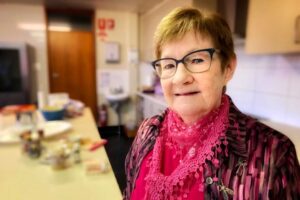
She came to the home for Josephite Sisters to study for two years when it first opened in 1969.
Now, its cosy rooms host a new generation of Canberra women — ones who do not wear the habit or attend daily prayers.
Living in rental stress, suffering abuse, or struggling with mental illness or addiction, these women are teetering on the edge of the poverty line.
Many have been displaced by the COVID-19 pandemic, and Sister Noelene has returned to make them chilli and cheese scones, using her late mum’s spatula…
You’re invited to read the whole article in the ABC News below:
Holly Tregenza
Christ Has no Body Now but Yours
June 13, 2020Feast of the Body and Blood of Christ.
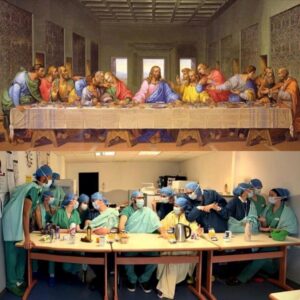 While reflecting on the coming feast of Corpus Christi, this image captured my attention. Someone has put together into one picture a traditional image of the Last Supper with the Healthcare workers at Hopital La Pitié Salpêtrière in Paris.
While reflecting on the coming feast of Corpus Christi, this image captured my attention. Someone has put together into one picture a traditional image of the Last Supper with the Healthcare workers at Hopital La Pitié Salpêtrière in Paris.
My first glimpse brought to mind the words of St Teresa of Avila, ‘Christ has no body now but yours.’ We know that the medical ‘frontliners’ are breaking open the bread of their lives every day for others, reflecting Jesus words: ‘This is my body, given for you.’
Unlike the ‘frontliners’, those of us in isolation have had the time and space for solitude and contemplation. While these ‘bubbles’ may have been very contained, we have been taken right into the suffering of our world through a multitude of media. What a gift to help keep in balance personal need and that of those most suffering.
All around me in my ‘stay at home’ world I see people every day being the hands, heart, eyes and ears of Christ to each other. The ANZAC Day driveway gatherings provided a chance to meet neighbours for the first time; Sisters taking someone for a drive to see more than their own four walls; shopping lists taken by others and the goods delivered; creative ways of celebrating birthdays; facilitating the livestreaming of funerals so people can be ‘present’; the joy and frustrations of communal jigsaws, to name a few. These freely shared, loving acts of neighbourliness and kindness are flattening many curves of isolation and need. So, while not being able to gather for Eucharist, people are daily breaking open the bread of their lives with and for each other.
 It is no surprise that this unique global experience has seen our connections across the world dramatically increase through the internet. I have been fed by the sharing of story, image, poetry, satire, song, music and cartoon – all gift to share with others. The creativity shown by many online has nourished solidarity and connection. Platforms like Zoom and Skype have provided new opportunities to bring a variety and a diversity of people together to pray, sing, discuss, celebrate and dream of a better, healthier future for humankind and our planet. St Paul talks of creation groaning and I can’t help but think that our planet is also singing because our standstill has given it a chance to breathe better. We are one body on and with this planet and we have all seen the dramatic impact this standstill has had the planet. Dare we engage in determining a better future?
It is no surprise that this unique global experience has seen our connections across the world dramatically increase through the internet. I have been fed by the sharing of story, image, poetry, satire, song, music and cartoon – all gift to share with others. The creativity shown by many online has nourished solidarity and connection. Platforms like Zoom and Skype have provided new opportunities to bring a variety and a diversity of people together to pray, sing, discuss, celebrate and dream of a better, healthier future for humankind and our planet. St Paul talks of creation groaning and I can’t help but think that our planet is also singing because our standstill has given it a chance to breathe better. We are one body on and with this planet and we have all seen the dramatic impact this standstill has had the planet. Dare we engage in determining a better future?
In our Easter journey this year we, like Jesus’ followers, have had to ‘see’ with new eyes. In the face of extreme suffering we recognise Christ in the breaking of the bread of so many people’s lives. Let’s take these thoughts into this feast of Corpus Christi as we celebrate how each is and has been the feet, hands, eyes, voice – the Body of Christ.
Annette Arnold rsj
This YouTube of St Teresa’s words provides an opportunity for reflection:
Media Release: Sr Margaret Cleary Awarded Order of Australia Medal
June 10, 2020Sister Margaret Cleary of the Sisters of Saint Joseph awarded Order of Australia Medal in Queen’s Birthday Honours.
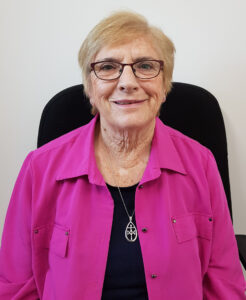
The Sisters of Saint Joseph are delighted to announce that Sister Margaret Cleary has been awarded a Medal of the Order of Australia (OAM) in the Queen’s Birthday Honours 2020 For Service to the Catholic Church of Australia.
Sister Margaret has been a part of the Congregation of the Sisters of Saint Joseph for over 57 years, having joined the Congregation in January 1963 and being professed in 1966. Having initially trained in education and working ministering as a primary school teacher, Sister Margaret has a natural passion for education and pastoral care and collaborating with Staff, Students, Families and Parishioners.
Sister Margaret went on to continue her work in education across a variety of parishes and dioceses in Queensland. She was Principal in Millmerran, Mundingburra – Townsville, Upper Mount Gravatt, Cloncurry, St. Peter’s Caboolture.
Following her teaching days, Sister Margaret worked diligently as a Provincial Councillor in Queensland before becoming a Congregational Financial (Bursar) Administrator between 2008 – 2013.
“I am honoured and humbled to receive the Order of Australia Medal,” said Sister Margaret.
Reflection on Mary MacKillop
June 8, 2020In 1873-1874 Mary travelled from Rome and then to London where the McDougalls invited her to stay at their house in Clapham Park and make herself at home during their absence. Mary then travelled to Paris and to her ancestral home the Braes of Lochaber in Scotland.
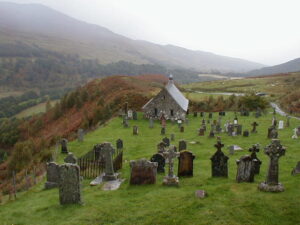
From there she returned to Fort William, where illness delayed her again for a few days before she could start for Fort Augustus. She was overjoyed to meet on the canal steamer the priest who had consoled her in her loneliness at Versailles. He paid her expenses and handed her over to her relative, Dean MacDonald of Fort Augustus, with whom she then stayed for three days. The story was the same everywhere – helpful priests and kindly welcomes in convents. … Fr Bissett gave her soul ‘the help and encouragement it sometimes so sadly needed.’
Extract from ‘Mary MacKillop: An Extraordinary Australian’ by Paul Gardiner sj (1993) pp. 140-141. E J Dwyer Pty Ltd Australia.

Let us ponder on Mary’s life during the long wait to hear from Rome about the future of the congregation.
- Imagine Mary’s delight and relief on meeting her relatives and visiting her ancestral home.
- What are your thoughts about Mary’s choice to move from comfort to cheap and convenient lodgings?
- How does Mary’s humour, devotion and resilience speak to you in this vingnette?
Mary MacKillop Saint for Australia and the world, pray for us.
Michele Shipperley rsj
Image sources:
[1] Cille Choirille Church and Graveyard by Dave Fergusson obtained from Wikimedia Commons. .
[2] Saint Mary MacKillop commemorative coin obtained from The Perth Mint Australia website.
